Publications
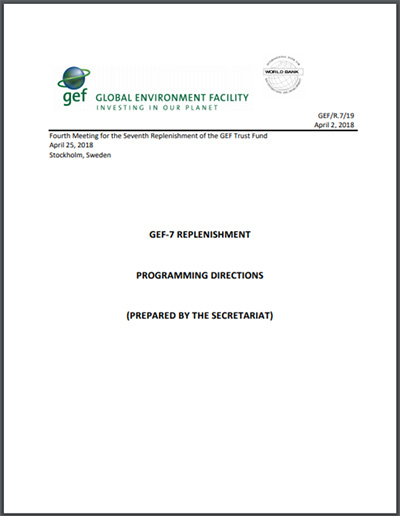 GEF-7 Programming Directions
GEF-7 Programming Directions
Published in 2018
Close to 30 countries have jointly pledged US$4.1 billion to the GEF to better protect the future of the planet and human well-being. With the health of the global environment worsening, the GEF has received strong support for its new four-year investment cycle, (known as GEF-7), to help safeguard the world’s forests, land, water, climate, and oceans, build green cities, protect threatened wildlife, and tackle new environmental threats like marine plastic pollution. The GEF-7 Programming Directions provides the strategic framework for the next cycle of the GEF investments.
DOWNLOAD: GEF-7 Programming Directions in FULL VERSION or only the IW FOCAL AREA STRATEGY section.
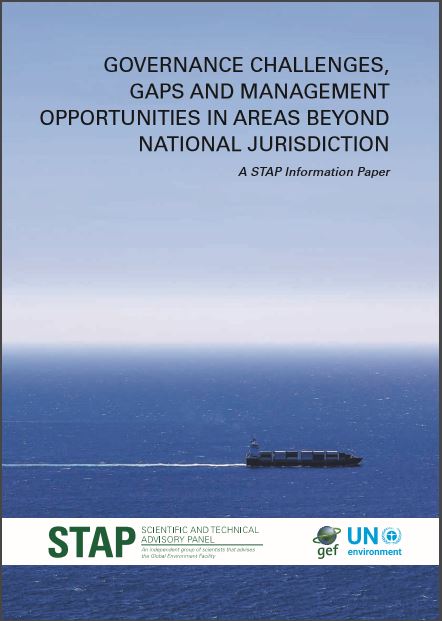 Governance Challenges, Gaps and Management Opportunities in Areas Beyond National Jurisdiction: A STAP Information Paper
Governance Challenges, Gaps and Management Opportunities in Areas Beyond National Jurisdiction: A STAP Information Paper
Published in 2017
This Scientific and Technical Advisory Panel (STAP) information paper synthesizes the regulatory and legal frameworks of UNCLOS. It encourages the GEF to support actions that account for the diversity of ecosystem services that areas beyond national jurisdiction (ABNJ) provides to regulating the climate, maintaining and enhancing marine biodiversity, and supporting local livelihoods. Integrated spatial planning and other tools, or approaches, can help support future actions on ABNJ while strengthening governance arrangements that can address future risks and environmental challenges not aptly covered by current laws and institutional policies. The STAP comprises eight expert advisors supported by a Secretariat, which are together responsible for connecting the GEF to the most up to date, authoritative and globally representative science.
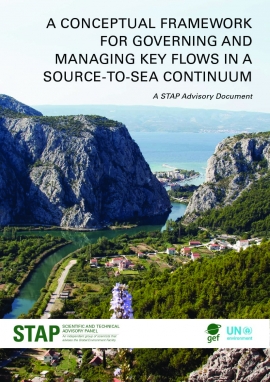 A Conceptual Framework for Governing and Managing Key Flows in a Source-to-Sea Continuum
A Conceptual Framework for Governing and Managing Key Flows in a Source-to-Sea Continuum
Published in 2017
This publication aims to present foundations for the integration of “blue” and “green” economic growth opportunities in the source-to-sea continuum. The paper defines the continuum and discusses key biophysical flows and linkages across open oceans, adjoining seas, estuaries, coastal areas, freshwater systems and land or terrestrial systems. It discusses how the GEF portfolios address these linkages and reviews case studies of source to sea initiatives in order to draw out key factors that can be used to build sustainability into GEF projects. The paper then presents seven recommendations to identify opportunities with regard to growing investments that address source-to-sea priorities throughout the GEF portfolio, including understanding governance dimensions of source-to-sea systems, engaging key stakeholders and ministries, and giving systematic consideration to source-to-sea systems in transboundary diagnostic analysis/strategic action programmes.
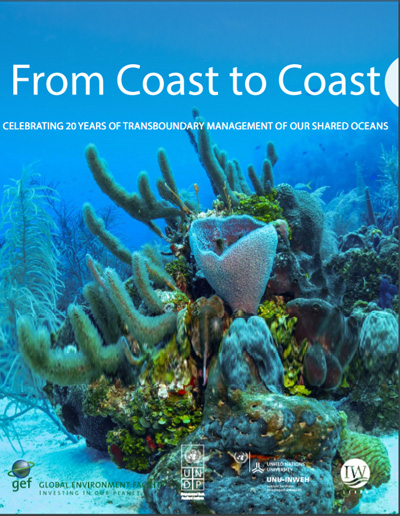 From Coast to Coast: Celebrating 20 Years of Transboundary Management of Our Shared Oceans
From Coast to Coast: Celebrating 20 Years of Transboundary Management of Our Shared Oceans
Published in 2015
From Coast to Coast highlights how the GEF has worked with partners to improve ocean governance by working across nations to promote ecosystem-based approaches to fisheries and other marine and coastal resources, protect coastal habitats from land based sources of pollution, and catalyze the formation of country driven, country owned and ultimately country financed regional institutional frameworks. It also showcases key GEF International Waters interventions in coastal and marine environments that, through regional processes and national investments, have had a transformational impact on ocean governance in a critical time when coastal areas attract an increasing portion of the world population. From Coast to Coast is produced under the auspices of the United Nations University's Institute for Water, Environment and Health, under an activity on the UNDP implementation of the GEF project IW:LEARN.
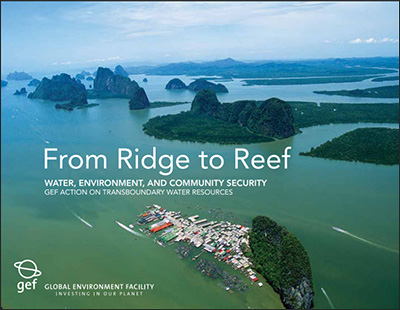 From Ridge to Reef - Water, Environment, and Community Security: GEF Action on Transboundary Water Resources
From Ridge to Reef - Water, Environment, and Community Security: GEF Action on Transboundary Water Resources
Published in 2015
The world's oceans, rivers, lakes, and groundwater systems do not respect political borders. These large water systems cover most of our planet, but they continue to be managed in a national and fragmented way that is endangering the food supply and livelihoods of billions of people. This publication explore just a handful of the GEF International Waters projects that have enabled countries to work collectively and, in many cases, to establish adaptive management institutions.
Also available in French and Spanish
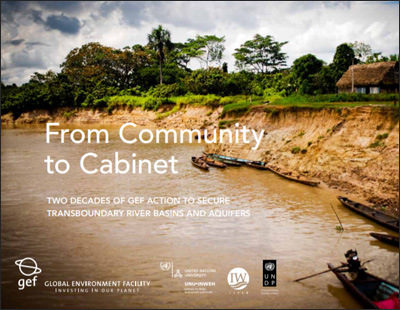 From Community to Cabinet: Two decades of GEF action to secure transboundary river basins and aquifers
From Community to Cabinet: Two decades of GEF action to secure transboundary river basins and aquifers
Published in 2015
The GEF was set up as a pilot grant facility in 1991. It is the largest financial institution with the mandate, ability, and experience to address current and future challenges to shared freshwater systems. Also established the GEF International Waters focal area to help countries work together to resolve growing tensions over large water systems. The case studies described in this publication recognize the collaboration and trust essential to effective mutual action to reverse the degradation and depletion of our freshwater resources.
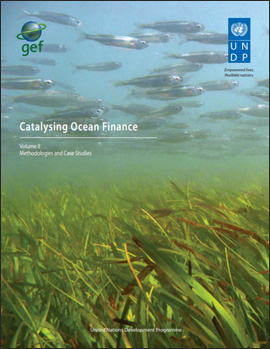 Catalyzing Ocean Finance
Catalyzing Ocean Finance
Published in 2012
Catalysing Ocean Finance demonstrates that, far from being an intractable problem, sustainable ocean management could become a successful legacy of today’s generation of decision-makers. It shows how the challenges facing the ocean stem from widely understood market and policy failures - failures which can be addressed through the application of appropriate mixes of market and policy instruments. Over the past twenty years, the UNDP and the GEF have successfully developed a range of strategic planning tools aimed at assisting governments to put in place enabling policy environments to catalyse investment for restoring and protecting the marine environment. In several cases, catalysed public and private financial flows have exceeded the initial GEF investment several hundred times. In some cases, these instruments have helped to shift sizeable ocean industries, such as shipping and tuna fisheries, to a more environmentally sustainable path. Catalysing Ocean Finance (Volumes I & II) takes stock of how effective these instruments have been in helping countries to address challenges facing the oceans and explore how they could be successfully scaled up. It estimates that an initial public investment – on the order of $5 billion over the next ten to twenty years – could be sufficient to catalyse several hundred billion dollars of public and private investment, and thereby foster global transformation of ocean markets towards sustainability. Download: Volume I I Volume II
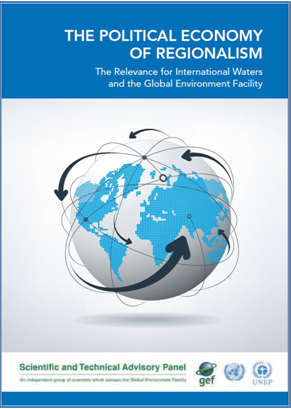 The Political Economy of Regionalism: The Relevance for International Waters and the Global Environment Facility: A STAP Issues Paper
The Political Economy of Regionalism: The Relevance for International Waters and the Global Environment Facility: A STAP Issues Paper
Published in 2014
Most freshwater and marine systems are transboundary in nature and therefore depend on sound regionalism and regional governance. The way these transboundary water systems are governed and managed is of vital importance for economic and social development, food security, biodiversity conservation, and the sustainable use and maintenance of ecosystem services. Yet there is little systematic knowledge about how transboundary water management systems are affected by regionalism and regional organizations. This STAP publication on The Political Economy of Regionalism provides the context and analytical tools needed to understand contemporary regionalism and regional organizations from a global and political economy perspective. It reports on the results of an extensive desk-study of the GEF International Waters (IW) portfolio to assess each project’s relation to regional cooperation and the extent to which it met its design objectives.
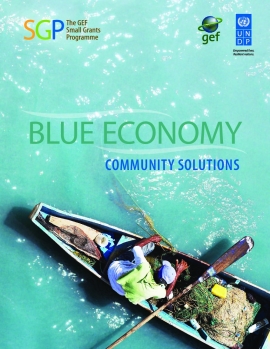 Blue Economy: Community Solutions
Blue Economy: Community Solutions
Published in 2018
This publication includes examples from across different continents, ecosystems and cultures, but they all address the priorities of livelihoods and conservation in combination and bring benefits on both fronts. By giving local communities an immediate, concrete stake in the sustainable management of the ocean’s resources, these projects have each secured the local stewardship they need to be a viable, long-term part of the blue economy. A blue economy approach has been proposed by the international community to address the balance between the three dimensions of sustainable development. Blue economy refers to a concept that seeks to promote economic growth, social inclusion and the preservation and improvement of livelihoods, while at the same time ensuring the environmental sustainability of the oceans and seas (World Bank and United Nations, 2017).
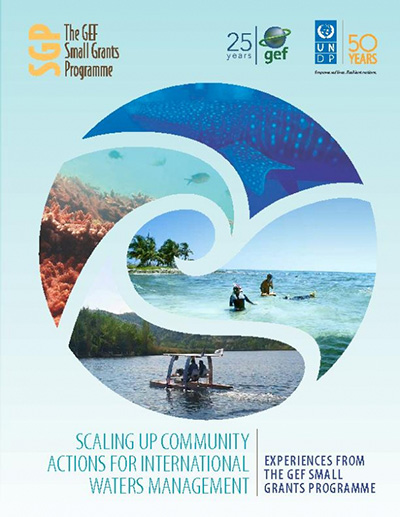 Scaling up Community Actions for International Waters Management
Scaling up Community Actions for International Waters Management
Published in 2016
The GEF Small Grants Programme has supported the implementation of regional Strategic Action Programmes with 1,027 small grant projects in more than forty transboundary waterbodies around the World. SGP experience show that communities when empowered to take action can implement concrete measures to reverse environmental degradation trends. The ten cases in this publication further highlight the way in which diverse communities from Cuba to Cape Verde, and Mauritius to Malaysia have tackled critical water and ecosystem management challenges with limited resources, to achieve environmental protection hand in hand with crucial benefits to local livelihoods, health and wellbeing. The lessons learned presented provide valuable guidance on supporting community innovations and then their eventual scaling up through multiple partnerships and links with larger projects.
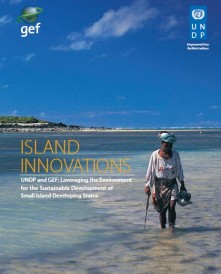 Island Innovations
Island Innovations
Published in 2016
This publication showcases some of the most successful approaches and achievements emerging from Small Island Developing States (SIDS) and zooms in on a range of actions, including conservation and sustainable use of critical marine and coastal resources, climate change mitigation, adaptation efforts and more. For example, in Vanuatu, UNDP-GEF has helped the country to embrace sustainable land management techniques that protect the environment and strengthen customary and traditional knowledge and approaches. In the Caribbean, integrating watershed and coastal management helped 13 Caribbean SIDS protect scarce water resources.

























